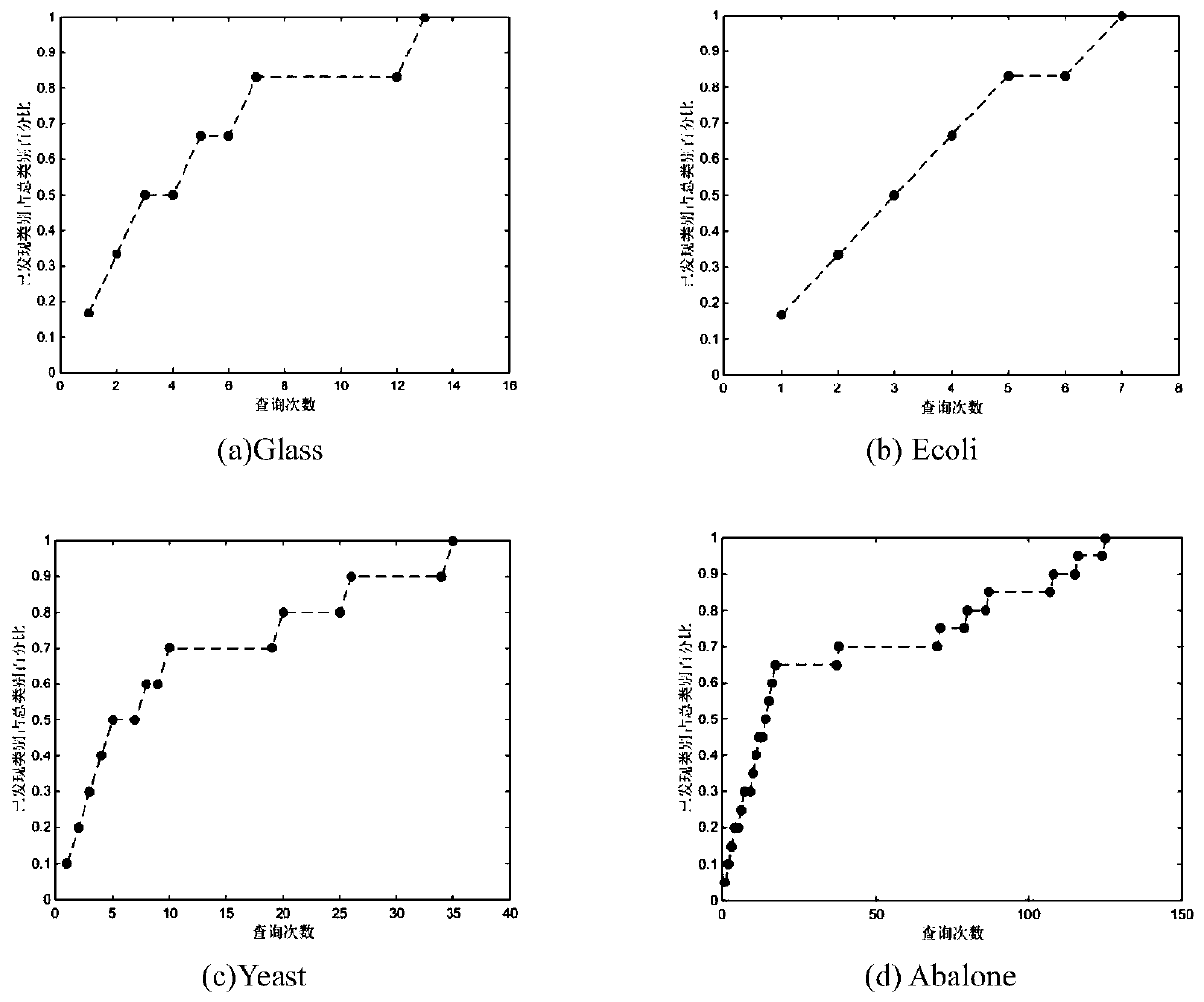A rare class detection method and device based on a k-nearest neighbor graph
A k-nearest neighbor graph and detection method technology, which is applied in the directions of instruments, computing, character and pattern recognition, etc., can solve problems such as high time complexity, achieve the effect of improving discovery efficiency and reducing the number of inquiries
- Summary
- Abstract
- Description
- Claims
- Application Information
AI Technical Summary
Problems solved by technology
Method used
Image
Examples
Embodiment 1
[0055] This embodiment provides a rare class detection method based on the k-nearest neighbor graph, please refer to figure 1 , the method includes:
[0056] Step S1: For a preset given unlabeled dataset S, construct its k-nearest neighbor graph.
[0057] Specifically, the given unlabeled data set S is preset as an existing calibrated data set, and the k value of the k-nearest neighbor graph can be calculated by a preset algorithm.
[0058] In one implementation, for a preset given unlabeled data set S, construct its k-nearest neighbor graph, specifically including:
[0059] Calculate the k value through the preset clustering algorithm;
[0060] Based on the calculated k value, a k-nearest neighbor graph is constructed for the data set S, where the k-nearest neighbor graph G=(V, E) is a weighted directed graph, each node p∈V represents a data sample, and each edge e ∈E indicates that the two endpoints of the edge are neighbors, and the weight of the edge is the Euclidean di...
Embodiment 2
[0091] This embodiment provides a rare class detection device based on the k-nearest neighbor graph, please refer to Figure 4 , the device consists of:
[0092] The k-nearest neighbor graph construction module is used for constructing its k-nearest neighbor graph for a preset given unlabeled data set S;
[0093] The variation coefficient definition setting module is used to set the definition of the variation coefficient Vc of the node p based on the constructed k-nearest neighbor graph, Vc(p)=maxV(p)×std(EL(p)),
[0094]
[0095]
[0096] Among them, kNN(p) represents the set of k nearest neighbor nodes of p, EL(p) represents the edge length set of node p, deg(p) is the in-degree of point p in the k-nearest neighbor graph, and is based on the set variation coefficient Define, calculate the coefficient of variation value corresponding to each node in the data set S;
[0097] The rare category acquisition module is used to find the node x with the largest variation coe...
Embodiment 3
[0107] See Figure 5 , based on the same inventive concept, the present application also provides a computer-readable storage medium 300, on which a computer program 311 is stored. When the program is executed, the method as described in the first embodiment is implemented.
[0108] Since the computer-readable storage medium introduced in the third embodiment of the present invention is a computer device used to implement the rare class detection method based on the k-nearest neighbor graph in the first embodiment of the present invention, based on the method introduced in the first embodiment of the present invention, this Those skilled in the art can understand the specific structure and deformation of the computer-readable storage medium, so details will not be repeated here. All computer-readable storage media used in the method in Embodiment 1 of the present invention fall within the scope of protection intended by the present invention.
PUM
 Login to View More
Login to View More Abstract
Description
Claims
Application Information
 Login to View More
Login to View More - R&D
- Intellectual Property
- Life Sciences
- Materials
- Tech Scout
- Unparalleled Data Quality
- Higher Quality Content
- 60% Fewer Hallucinations
Browse by: Latest US Patents, China's latest patents, Technical Efficacy Thesaurus, Application Domain, Technology Topic, Popular Technical Reports.
© 2025 PatSnap. All rights reserved.Legal|Privacy policy|Modern Slavery Act Transparency Statement|Sitemap|About US| Contact US: help@patsnap.com



